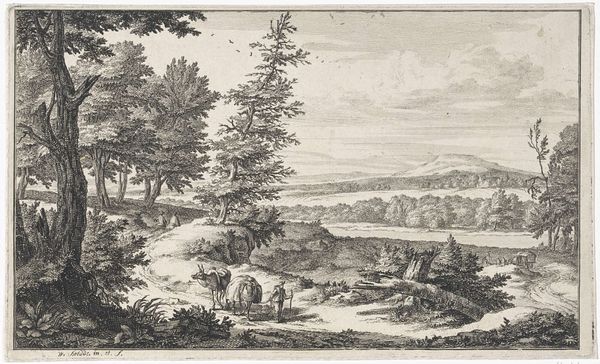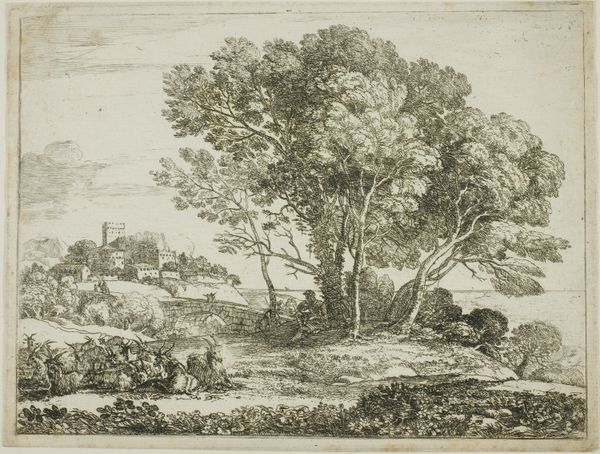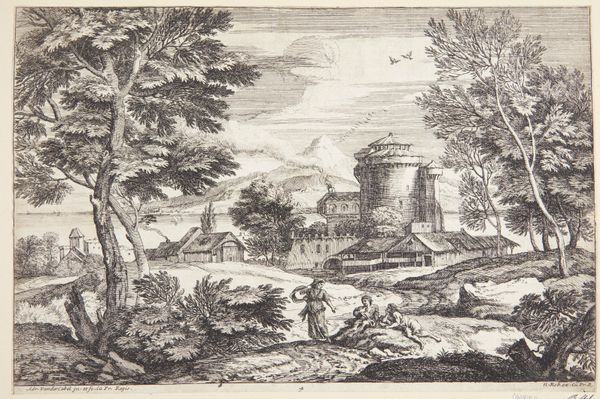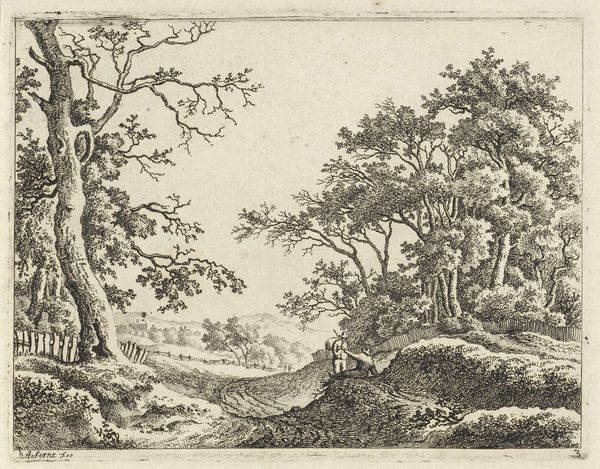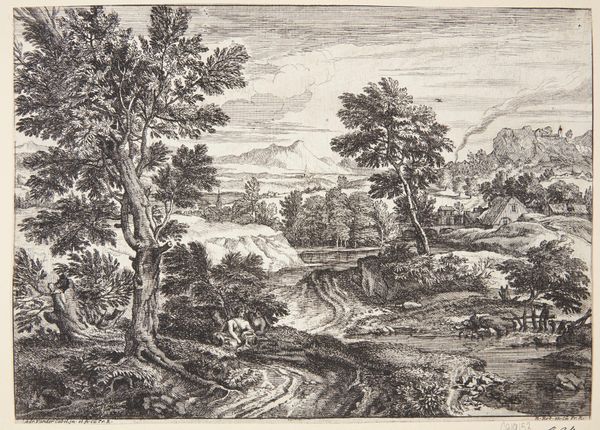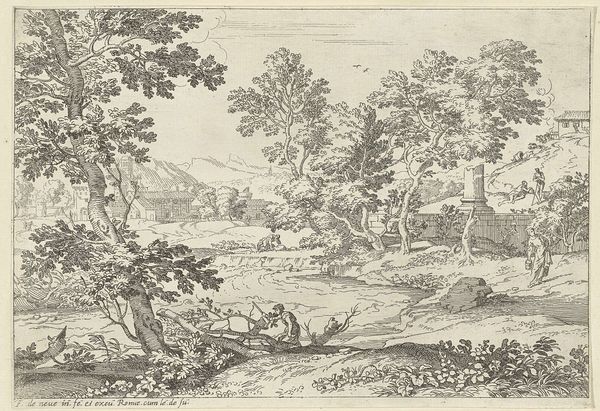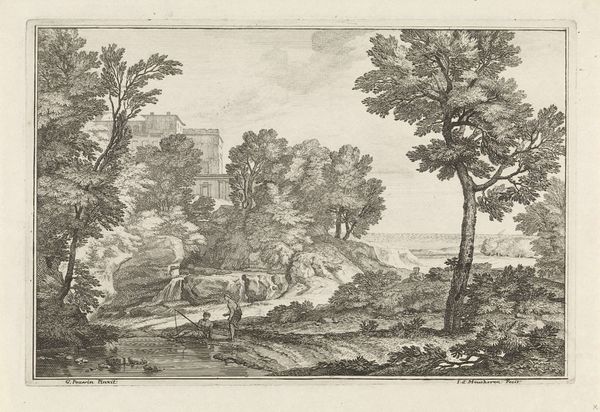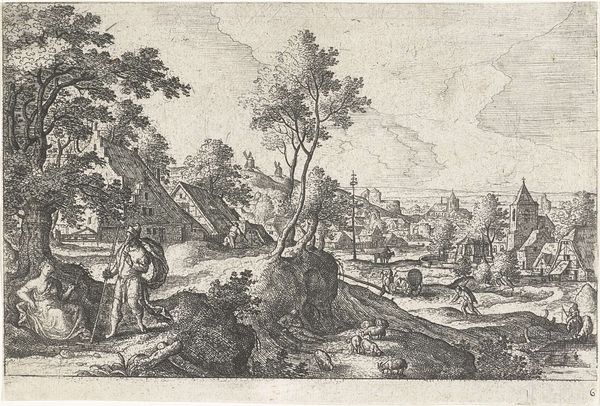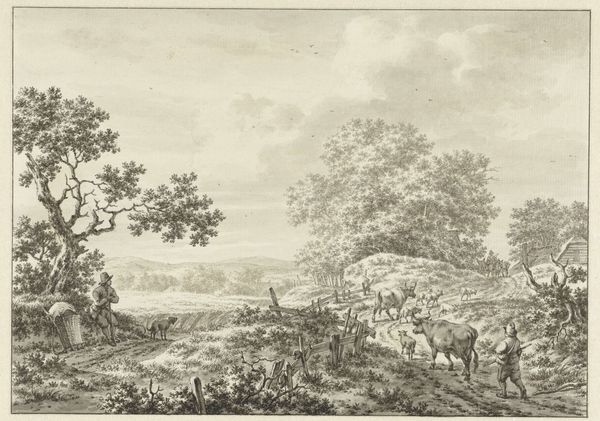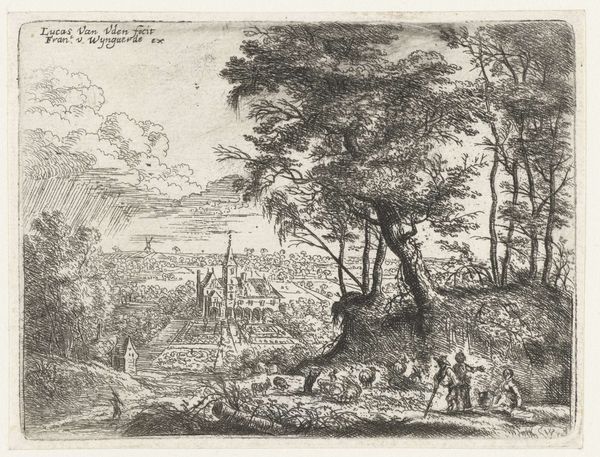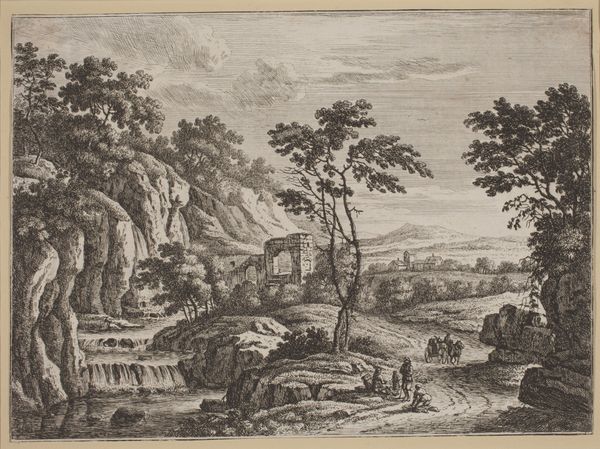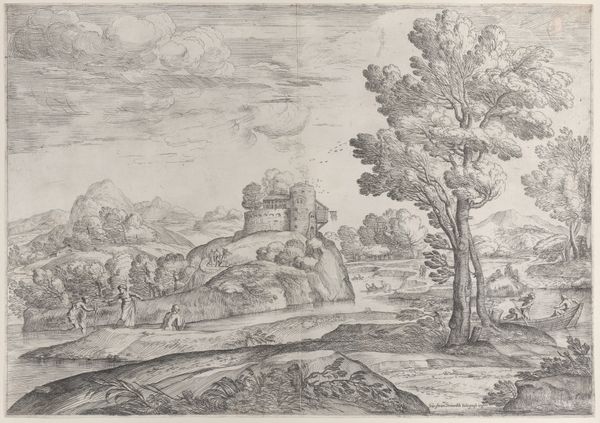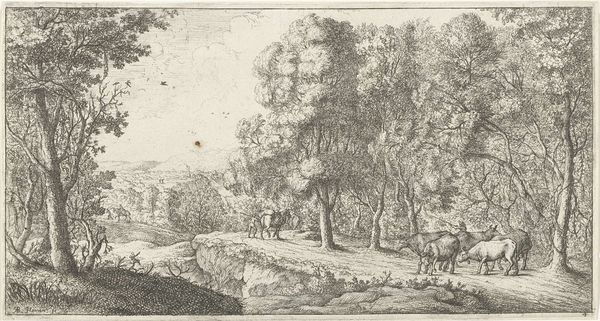
print, etching
#
narrative-art
#
baroque
#
dutch-golden-age
# print
#
etching
#
landscape
#
line
#
cityscape
#
realism
Dimensions: 126 mm (height) x 171 mm (width) (bladmaal)
Gillis Neyts made this landscape with travelers, using etching, sometime in the 17th century. Etching is an indirect process. The artist covers a metal plate with a waxy, acid-resistant ground, then draws an image with a pointed tool, exposing the metal. The plate is then immersed in acid, which bites into the exposed lines. The resulting incised lines hold ink, and when pressed onto paper, create a print. The quality of the line in etching is quite distinctive - controlled, and capable of great subtlety. Neyts uses this to great effect here, creating a rich sense of depth. Look closely, and you can see the way he has used layers of fine lines to create tone and texture, especially in the foliage. The printmaking process allowed for the widespread distribution of images, democratizing art and ideas. This little landscape hints at the wider world, making the distinction between fine art and craft a bit less firm.
Comments
No comments
Be the first to comment and join the conversation on the ultimate creative platform.
